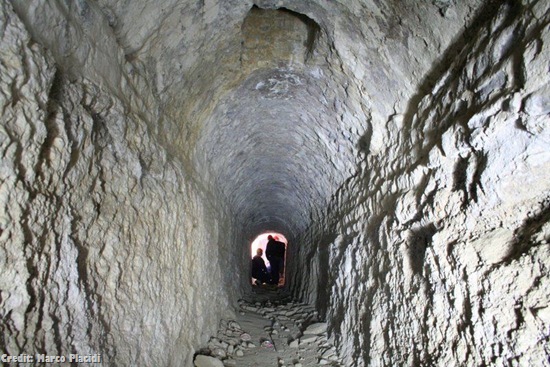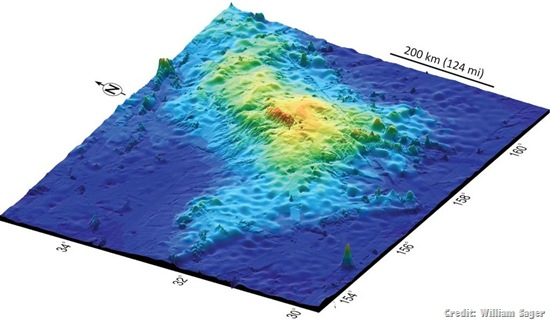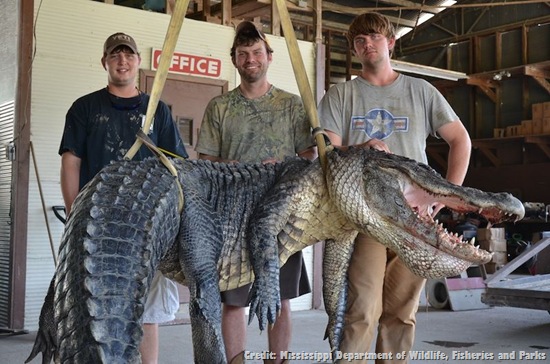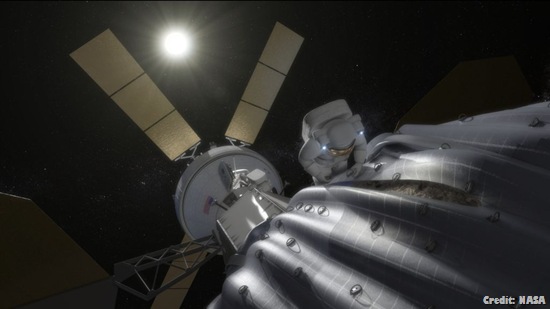
The largest volcano on Earth, the heaviest alligator and the most bizarre phobia you've never heard of...just a few of the COOL stories we brought you this week.
10. Secret tunnels discovered under Roman villa
Amateur archaeologists have uncovered a massive network of tunnels under the Roman Emperor Hadrian's Villa in Tivoli, Italy.
The underground passageways likely allowed thousands of slaves and merchants to keep the estate running without creating any distraction at the street level.
9. Earth's largest volcano found
The world's largest volcano lurks beneath the Pacific Ocean, researchers announced today (Sept. 5) in the journal Nature Geoscience.
Called the Tamu Massif, the enormous mound dwarfs the previous record holder, Hawaii's Mauna Loa, and is only 25 percent smaller than Olympus Mons on Mars, the biggest volcano in Earth's solar system, said William Sager, lead study author and a geologist at the University of Houston.
8. That's one big gator
Twice over Labour Day weekend, hunters in Mississippi broke the state record for the heaviest alligator ever caught, wildlife officials said.
The first male alligator was brought in shortly after midnight on Sept. 1 in a canal north of Redwood, Miss. It weighed 723.5 lbs. (328 kilograms), beating the previous record of 697.5 lbs. (316 kg), set during last year's hunting season, but it was only the record holder for about an hour.
7. Is numerosity our sixth sense?
Whether it's determining the number of ships on the horizon or the number of cookies in a jar, the human brain has a "map" for perceiving numbers, new research shows.
Topographical maps of the human brain are known to exist for the primary senses, such as sight, hearing and touch, but this is the first time such a map has been found for numerosity, or number sense. The map's layout allows for the most efficient communication among neurons doing similar tasks.
6. Amazon web baffles scientists
Credit: Troy Alexander / Tambopata Research Centre
A bizarre-looking web structure has been found in the Peruvian Amazon, and apparently nobody knows what it is, not even scientists.
The strange formation resembles a tiny spire surrounded by a webby picket fence and is about 2 centimetres (0.8 inches) wide. Georgia Tech graduate student Troy Alexander first spotted one of these on the underside of a tarp near the Tambopata Research Centre in the Peruvian Amazon. At first he thought it might have been an aborted moth cocoon, he wrote on Reddit. But then he found several more, all of which looked quite similar.
5. Bizarre phobia you've never heard of
A strange phobia makes people feel panicked or ill at the sight of holes, and new research hints at the cause.
In people who suffer from trypophobia, the sight of soap bubbles, aerated chocolate, or other objects with clusters of holes can cause migraines, panic attacks, hot sweats and a racing heart. The fear may stem from a visual resemblance to poisonous animals, according to a new study.
4. Cool ideas for asteroid-capture mission
As NASA continues to plan out its ambitious mission to snag an asteroid and park it near the moon, the space agency will consider nearly 100 ideas submitted by potential partners.
NASA has selected the top 96 proposals of more than 400 submitted by outside groups in response to a June request for information (RFI) designed to aid its asteroid-capture mission and improve humanity's ability to protect Earth from dangerous space rocks, officials announced Sept. 4.
3. How millipedes caused a train wreck
In the event of a collision, there's usually someone to blame, like a driver who's texting or is under the influence of drugs or alcohol. But in a recent train collision in Australia, the usual suspects were ruled out in favour of a less common culprit: millipedes.
Hundreds of small black Portuguese millipedes (Ommatoiulus moreletii) are the likely culprits in a train collision north of Perth, Australia, which injured six passengers. "Millipedes are one of the factors we are going to take into account," David Hynes, spokesperson for the Public Transport Authority of Western Australia, told Reuters.
2. What's in your pee?
Looking for an encyclopaedia of pee? Scientists have laid out the entire chemical composition of human urine, revealing that more than 3,000 compounds are found in the fluid, and have published it all in an online database.
In the study, which took seven years to complete, the researchers found that at least 3,079 compounds can be detected in urine. Seventy-two of these compounds are made by bacteria, while 1,453 come from the body itself. Another 2,282 come from diet, drugs, cosmetics or environmental exposure (some compounds belong to more than one group).
1. Lego releases 1st female scientist
Wearing glasses and a lab coat, and holding out two Erlenmeyer flasks, Professor C. Bodin (as her nametag reads) is Lego's first female scientist.
The new model, simply dubbed the "Scientist," is a member of Lego's Minifigure Series 11, which hit stores in the United States on Sept. 1.










No comments:
Post a Comment
Please adhere to proper blog etiquette when posting your comments. This blog owner will exercise his absolution discretion in allowing or rejecting any comments that are deemed seditious, defamatory, libelous, racist, vulgar, insulting, and other remarks that exhibit similar characteristics. If you insist on using anonymous comments, please write your name or other IDs at the end of your message.